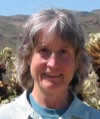
|
Donna Haraway Professor, History of Consciousness, UCSC. Personal statement: Gleaning puts contemporary urban people into a special kind of direct contact with some of the other biological species that make us human--in this case, the food plants people breed or buy, put into the soil as cuttings or seeds, and then cultivate, harvest, transport, distribute, cook, share, and eat, and, at least a lot of the time, digest. Human nature, says anthropologist Anna Tsing, is an historically situated multispecies relationship. The implications of that deceptively simple statement, in the context of today's globalized and stratified agricultural worlds, intrigues me. Listen to Donna |
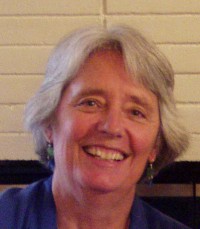
|
Susan Harding Professor, Anthropology, UCSC, one of the founders of the Generations working group. Personal statement: "Gleaning" is a social idea as well as a literal practice, comprising all kinds of "second harvest" practices that collect leftover and discarded food and goods from businesses and distribute them to others at no or low cost. "Gleaning" in this expanded sense speaks to and draws in all kinds of people - liberals, Christians, school kids, seniors, whites, blacks, latinos, city and country people, poor and middle class people -- and taps into their desires as well as their needs for everyday ways of living frugally. "Gleaning" is a charismatic metaphor not only because it links up diverse peoples, re-reaping practices, and consumption critiques, but also because it evokes parallel universes of meaningful practices ranging from recycling to renewable resources, public access and open space, intertextuality, filesharing, the Creative Commons, and Project Xanadu. Listen to Susan |

|
Rusten Hogness Producer of public radio series California Bird Talk. Project sound engineer and webmaster. Personal statement: Gleaning satisfies some pretty basic needs to work with others, help others, and have a direct physical connection with the food we eat. I love the sounds of gleaning: an onion wrenched from the soil, a knife whacking off fennel stalks, or the conversations of folks meeting for the first time around a common project. And I love radio stories. Almost everyone I meet has a story that opens up my sense of the world. Sharing stories and sound is just plain fun. |
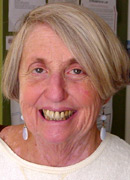
|
Helene Moglen Professor, Literature, UCSC. Co-founder of the Generations working group. Personal statement: Gleaning and the telling of personal stories have much in common. Both discover and give meaning to that which has been discarded as excess - and ignored. Both are about forms of sustainability: the maintenance of life and the complexities of continuity. Through the gleaning project, I want to work with others to draw out the personal and social significance of gleaning practices, discovering the relationship of history, self-reflection, and committed citizenship. Now at the far end of my life's trajectory, I am especially interested in the potential of our project to redefine and exploit the similarities and differences of generational experience. |

|
Marco Harding Student, Santa Cruz High School. Project photographer. Marco started as a gleaner. He started taking photographs and joined the project team. Listen to Marco Personal Statement:At first, I wasn't too happy spending my weekend doing something like this. But when I got out in the field, I had fun, probably because of the knives. Now I like it because I know the food's going to go to people who need the produce. You get to bond with other people, and you know it's going to a good cause. |
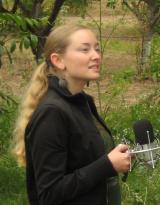
|
Christina Jogoleff Student, UCSC. Story collector. Christina started as a gleaner. Having grown up in a family that occasionally got food from food banks, she wanted to experience the other side of the relationship. Then she took up the topics of gleaning and farm labor as part of a term project for a course at UCSC. Joining the Gleaning Stories project seemed like an easy next step. Listen to Christina |
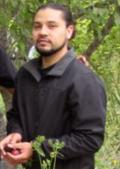
|
Mauricio Macias Teacher, Cabrillo. Story collector. Mauricio started as a gleaner, too. He writes and works with both video and still photography. Both he and Christina have encouraged many people in Watsonville to come gleaning. And both come to gleaning with strong identifications with the field workers. Listen to Mauricio |
|
Watch a video slideshow
introducing gleaning and the Gleaning Stories project. |
|

![]()

![]()

Partially Funded by the California Council for the Humanities, UC Santa Cruz, and INTA - TrainingWeal.
